Castle Acre
|
A lovely rural Norfolk village, famous for its Castle and Priory |
|
An Introduction to Castle Acre
|

Two ancient buildings dominate the lovely village of Castle Acre, the Norman Castle and the Priory. Both are now in ruins, but they offer a fantastic glimpse into the past and are one of the best examples of a Norman settlement in the country. Visitors to Castle Acre are entranced by the special atmosphere of this medieval walled town, which lies within the outer bailey of an 11th century castle.
Castle Acre takes its name from the castle built in the 12th Century by the Normans. Although now only its walls and ramparts remain, it attracts visitors all year round and offers splendid views of the surrounding Norfolk countryside. An ancient gateway arch, called the Bailey Gate, was the north gateway to the medieval town.
In addition to the Castle and the Bailey Gate, visitors should see the beautifully maintained Castle Acre Priory, whose walled herb garden and the prior’s lodging give an insight into the life of this once powerful priory. This lovely village also has a tea room and a traditional village pub, plus some beautiful walks alongside the River Nar. |
|
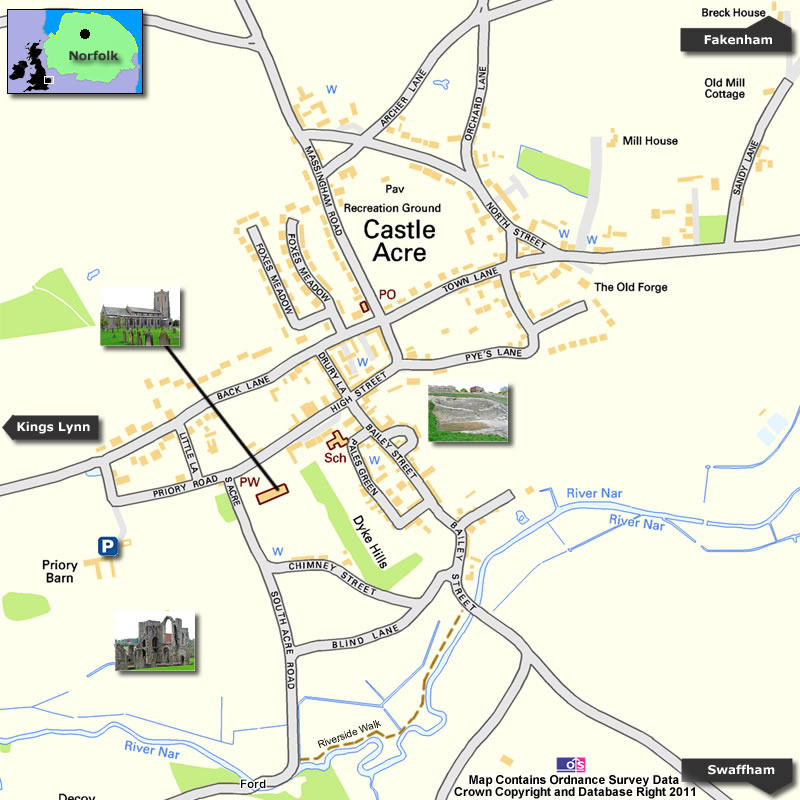
|
|
| |
|
Castle Acre Guided Picture Tour
|
We start our tour of Castle Acre by parking the car in the centre of the village, adjacent to the village green. You can usually find a spot and best of all, there is no parking restrictions and its free. Situated around the green and in the adjacent streets you will find plenty of pretty cottages, a few shops, a pub and a tea room (Barnfields). |
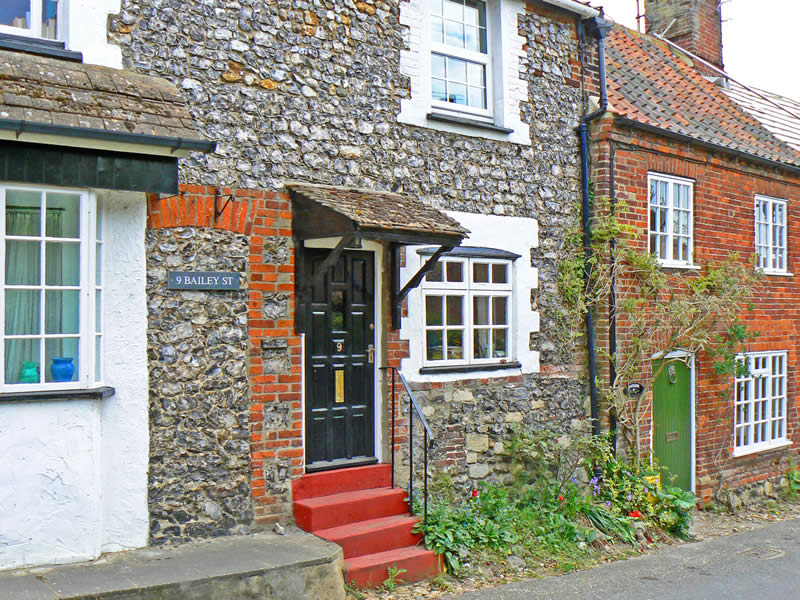
Cottages in the centre of Castle Acre |
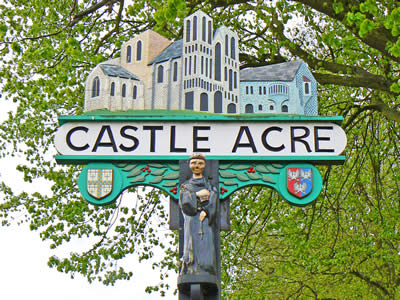
The Village Sign |
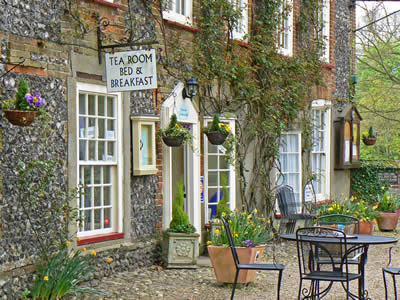
Church Cafe and B&B |
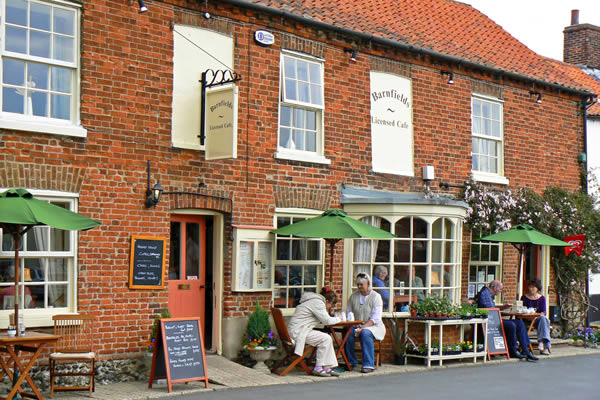
Barnfields Tea Rooms |
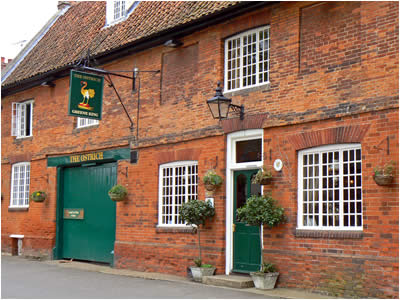
The Ostrich Pub |
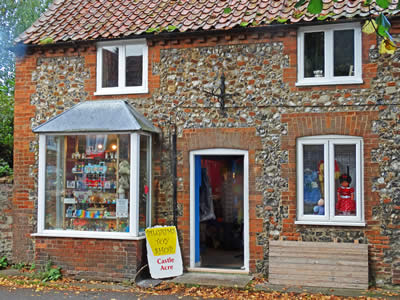
Pilgrims Toy Shop |
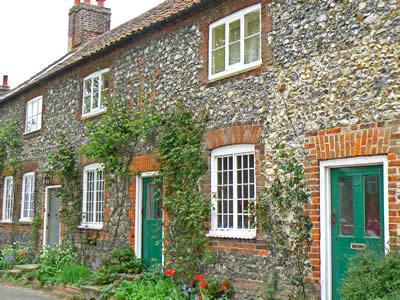
Flint cottages around the green |
From the 13th century, visitors to Castle Acre from the north, would have entered the town via a huge twin towered stone gateway, known as the Bailey Gate. This was one of 2 medieval gateways into Castle Acre and the only one to survive today, it is now looked after by English Heritage. Interestingly, the centre of the modern village is situated outside the medieval village, which would have extended down towards the River Nar and protected by the wall, remnants of which still remain. |
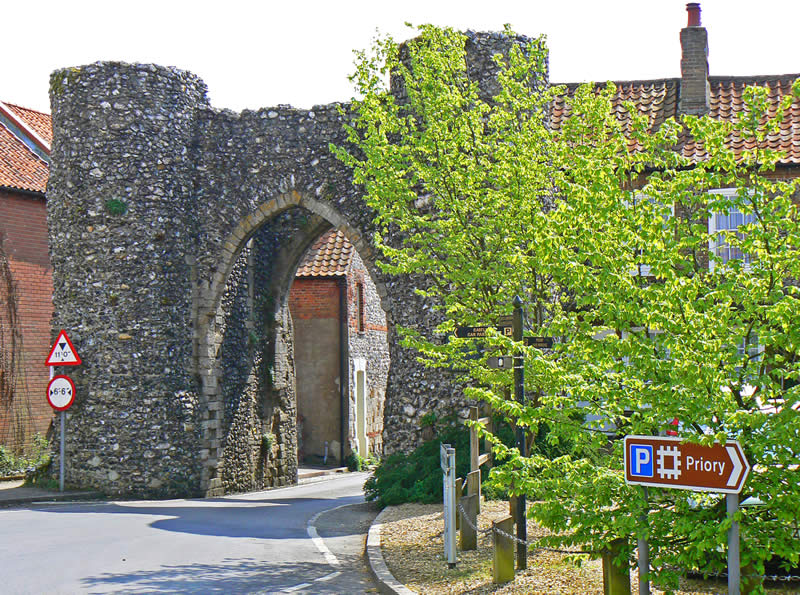
Approaching Bailey Gate from the North |
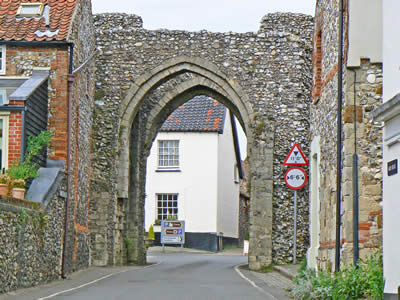
Bailey Gate from inside the fortified ancient town |
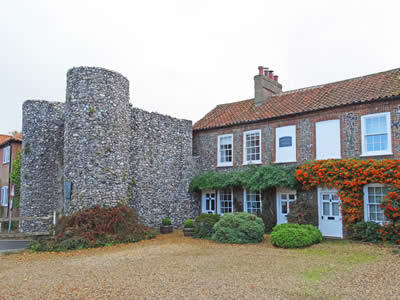
Cottages adjacent to the Bailey Gate |
A path leads to the ruins of the Castle, which was founded soon after the Norman conquest of 1066 by William de Warenne, first Earl of Surrey as his most important estate in Norfolk. The Castle is strategically placed where the ancient trackway known as the Peddars Way crosses the River Nar. The Castle is a great example of a Motte and Bailey - the Motte was the residence of the owner and the last refuge in the event of attack, the Bailey below would contain the living quarters, stores and workshops. Paths lead around the site allowing you to explore both the Motte and Bailey in detail. |
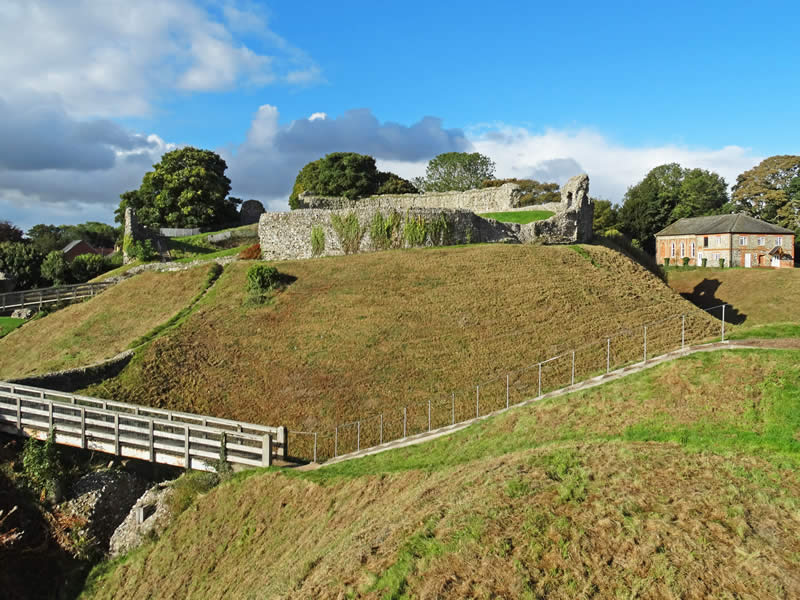
The ruins of the castle at Castle Acre |
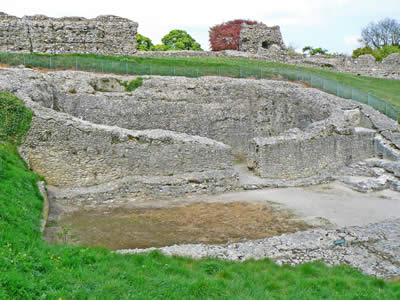
The summit of the Motte |
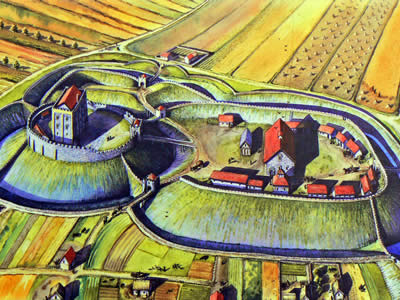
An illustration by Sue White, shows the Castle in the 12th Century |
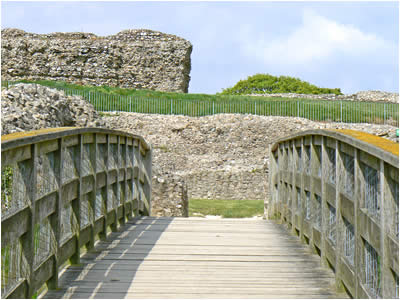
Crossing the main entrance into the ruined Keep |
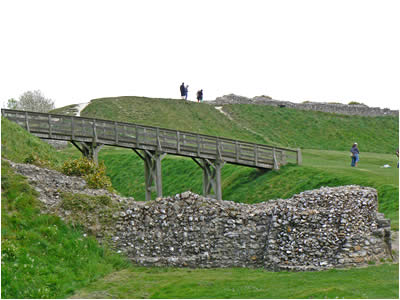
Exploring the Castle Ruins |
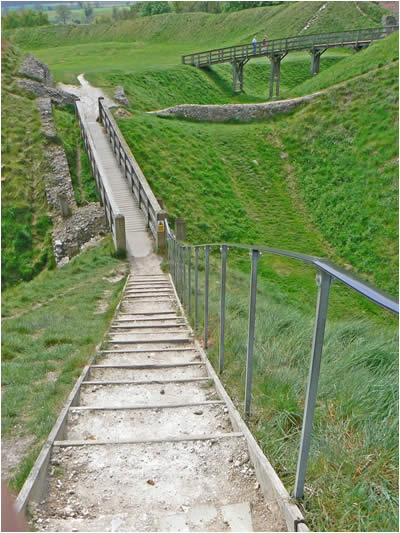
Paths lead right around the Castle to the Bailey below |
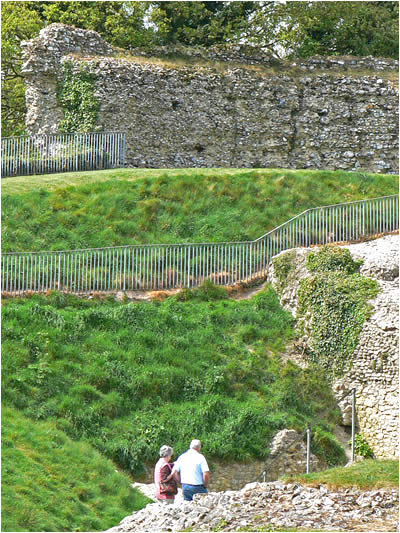
Exploring the Castle Keep |
Returning through the village, we come to the ancient Parish Church of St James the Great. Most of the building you see today was built during the 15th century, although some parts date from an earlier period. Highlights of the church include a 15th century elegant font, the rood screen (with painted panels), a pulpit looking like a wineglass and various other interesting features that I will leave you to discover for yourself! |
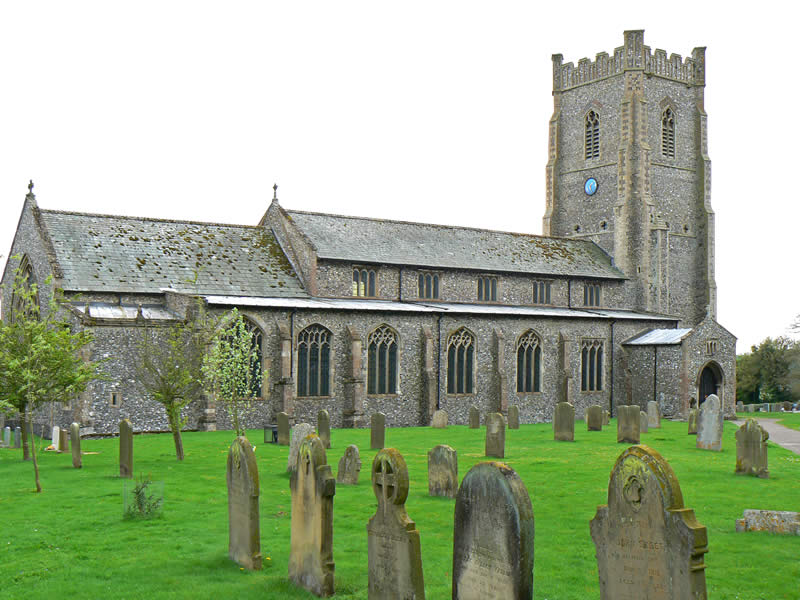
The Parish Church of St James the Great |
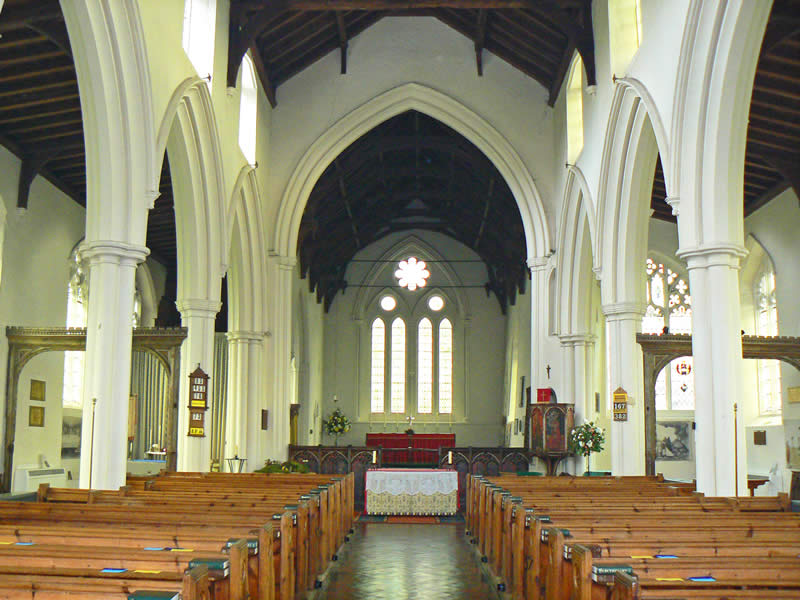
Inside the church |
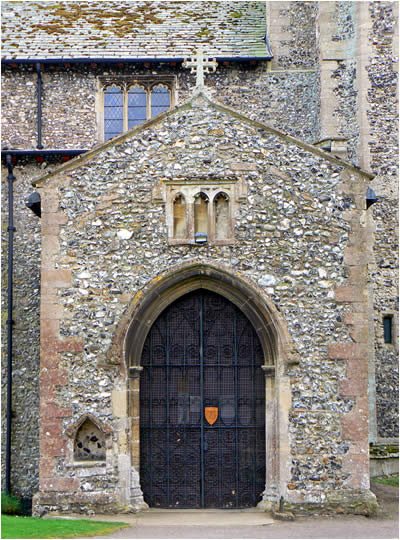
The church porch |
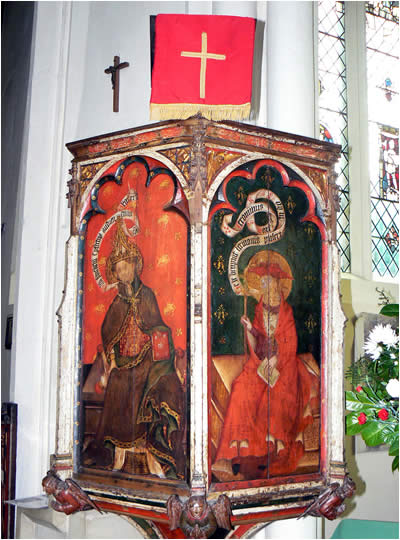
The hexagonal pulpit, dating from the 15th century |
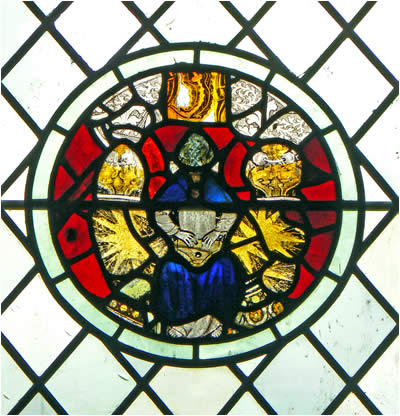
Stained Glass, showing a figure playing a psaltery |
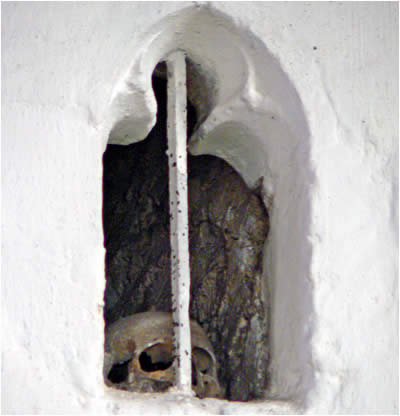
A skull in a upper window near the Altar |
Walking away from the village, we come to Castle Acre Priory, which despite being mainly in ruins, is one of the best preserved monastic sites in England. The priory originates from the 11th century after William de Warenne II and his wife Gundrada visited the great French monastery of Cluny. They were really impressed and decided to build similar ones to introduce the Cluniac order of monks to England. Many of the remains of the building they created at Castle Acre can still be seen today, including the magnificent west-end and prior's lodging. There is also a visitor centre, re-created herb garden and various other displays, all managed by English Heritage. |
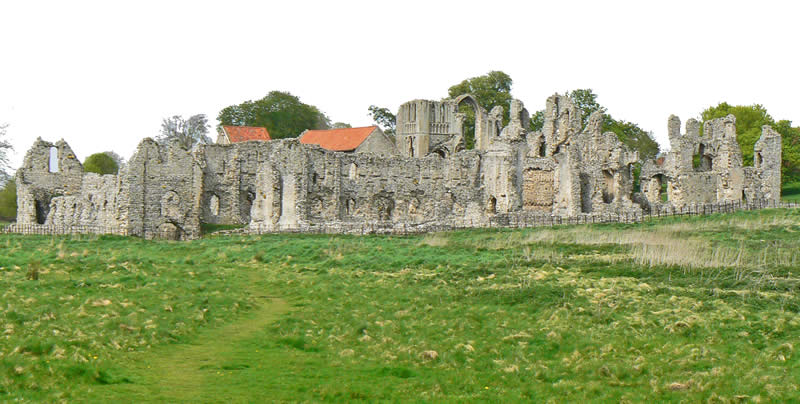
The Priory Site, managed by English Heritage |
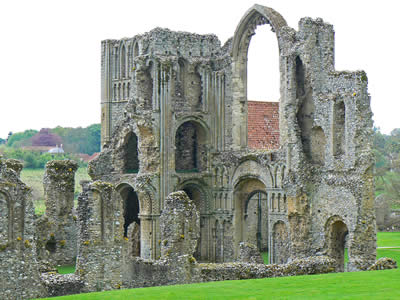
The ruins of Castle Acre Priory |
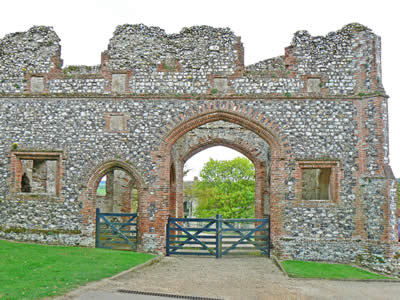
The gatehouse |
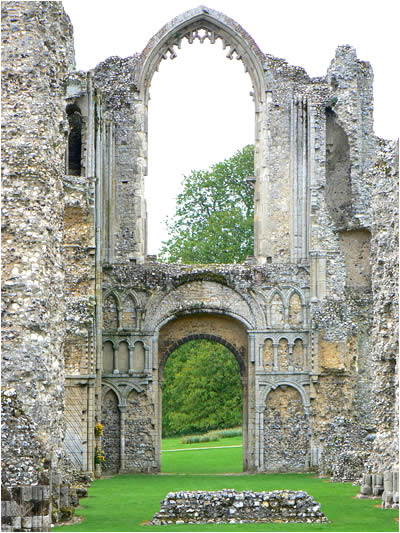
The west end, still standing almost to its original full height |
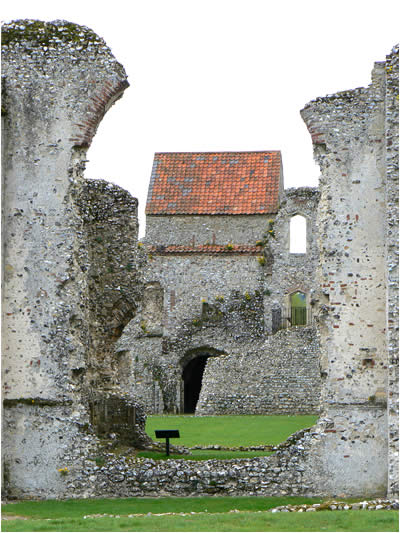
Prior's Lodgings |
Castle Acre lies at a strategic point where the Peddars Way (an old Roman road, now a long distance footpath) crosses the River Nar. In fact the word "Acra" is a Saxon word for stream or running water and it is clear that the river played an important part in the history of the village. Today, it is a lovely place for a walk and to take in the views of the surrounding countryside and the village itself. |
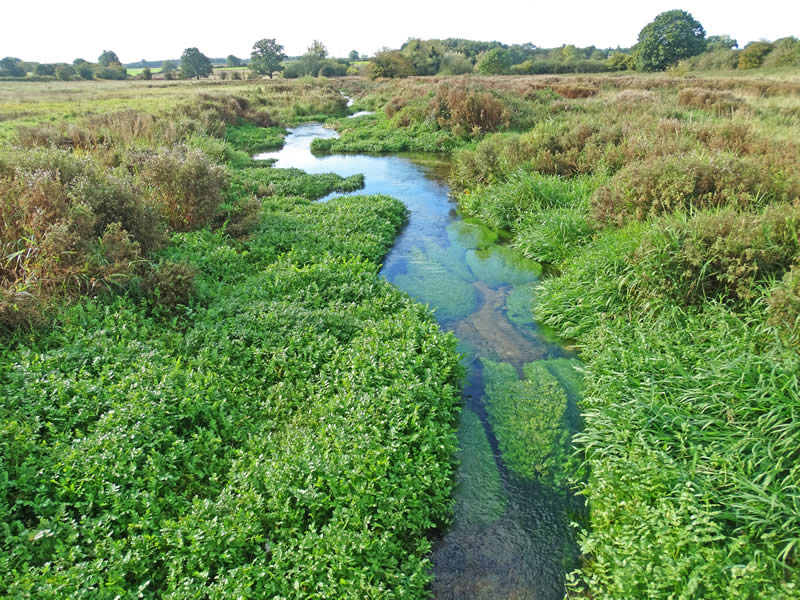
The River Nar at Castle Acre |
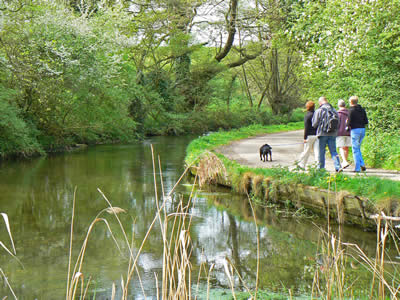
Walking along the banks of the River Nar |
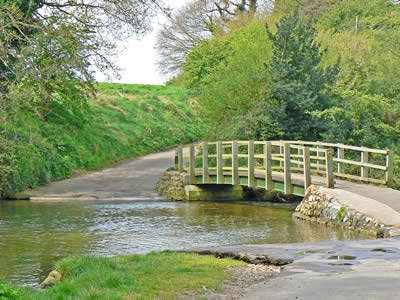
The road crosses the river at a ford |
Castle Acre Summary of What to SEE and DO
|
 Visit the ruins of the Castle (FREE) |
 Visit the Priory Ruins (charge) |
 Enjoy a cream tea in the village centre |
 Walk along the banks of the river and splash in the ford! |
 Explore the village church |
 Enjoy a pub lunch in a village pub |
|
|
Our Verdict
|
Castle Acre is a lovely walled historic village. Although its two star attractions are in ruins, it is well worth a visit and makes a great day out. |
|
|
TOUR INDEX |
|
|
|
|
|
|
|
|
|
NEARBY PICTURE TOURS |
|
|
|
|
|
TOURIST ATTRACTIONS |
 |
|
MORE OF OUR WEBSITES |
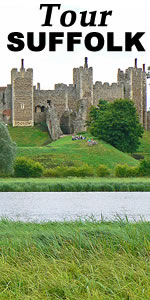 |
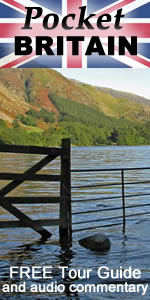 |
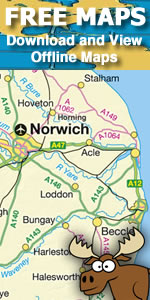 |
| |
|

